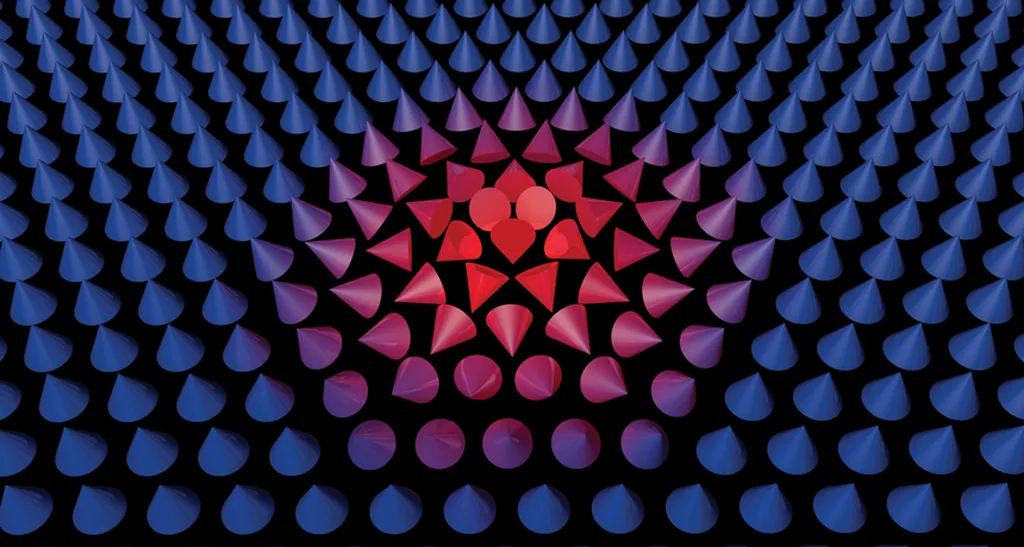In the quest for high-density, energy-efficient information technologies, a team of researchers led by Jaegyu Kim from the Department of Physics at the Korea Advanced Institute of Science and Technology (KAIST) has made a significant stride. Their work, published in the journal “npj Quantum Materials” (which translates to “New Journal of Quantum Materials”), explores the dynamic mechanical writing of skyrmion-like polar nanodomains in ferroelectric materials, opening up new avenues for data storage and processing.
Ferroelectric materials, known for their spontaneous electric polarization that can be reversed by an external electric field, have long been a subject of interest in the tech industry. What sets this research apart is the discovery of stable, skyrmion-like polar nanodomains generated by vibrational tapping using scanning probe microscope tips. “We’ve found that by applying dynamic mechanical forces, we can bidirectionally switch out-of-plane polarization in super-tetragonal BiFeO3 thin films,” Kim explains. This breakthrough could potentially revolutionize data storage technologies, making them more efficient and compact.
The implications for the energy sector are substantial. As the world grapples with the challenges of climate change and the need for sustainable energy solutions, the development of energy-efficient technologies becomes increasingly critical. “Our study provides a novel pathway into dynamic mechanoelectric coupling and topological polar structures,” Kim adds. This could lead to advancements in data centers, which are known for their high energy consumption, by enabling more efficient data storage and processing.
The research also sheds light on the dynamic mechanical excitations that generate topological ferroelectric structures, an area that has been largely unexplored until now. By understanding these mechanisms, scientists can pave the way for innovative technologies that leverage these unique properties. “This is not just about understanding the science; it’s about translating that understanding into practical applications that can benefit society,” Kim says.
The discovery of these skyrmion-like polar nanodomains could also have implications for other fields, such as quantum computing and spintronics, where the manipulation of topological structures is crucial. As the world moves towards a future driven by data and technology, the need for efficient, high-density data storage solutions becomes ever more pressing. This research could be a significant step in that direction.
In conclusion, the work of Jaegyu Kim and his team at KAIST represents a significant advancement in the field of ferroelectric materials and their applications. By uncovering the dynamic mechanical writing of skyrmion-like polar nanodomains, they have opened up new possibilities for energy-efficient information technologies. As the world continues to grapple with the challenges of climate change and the need for sustainable energy solutions, this research offers a glimmer of hope for a more efficient, data-driven future.

